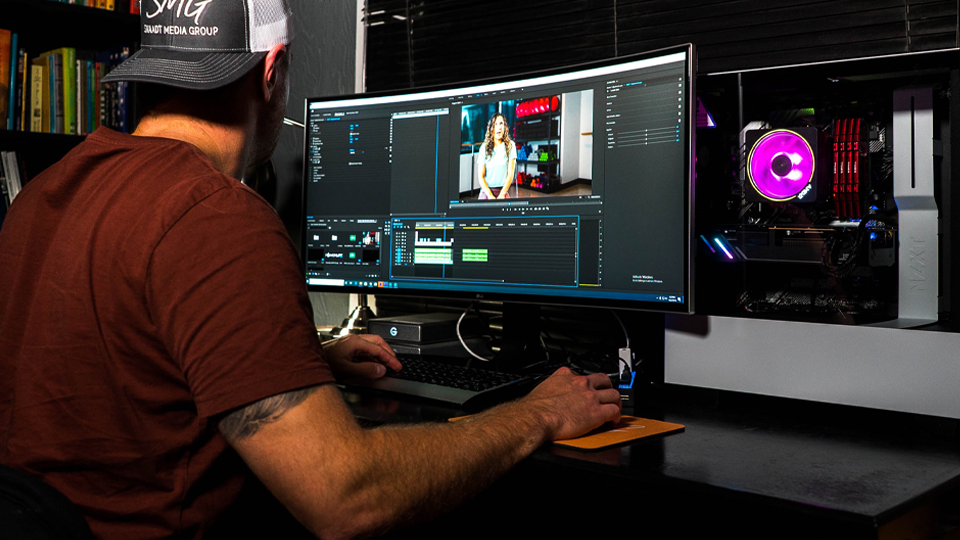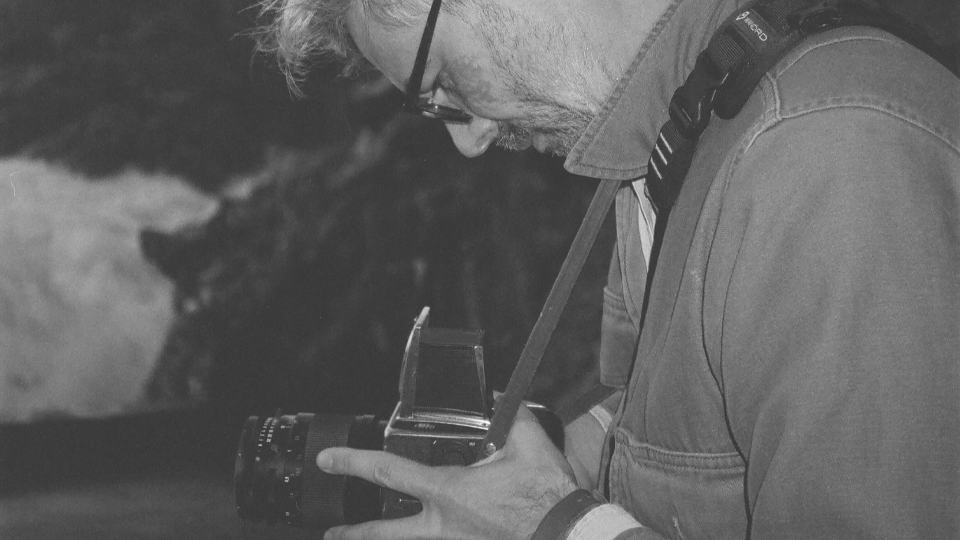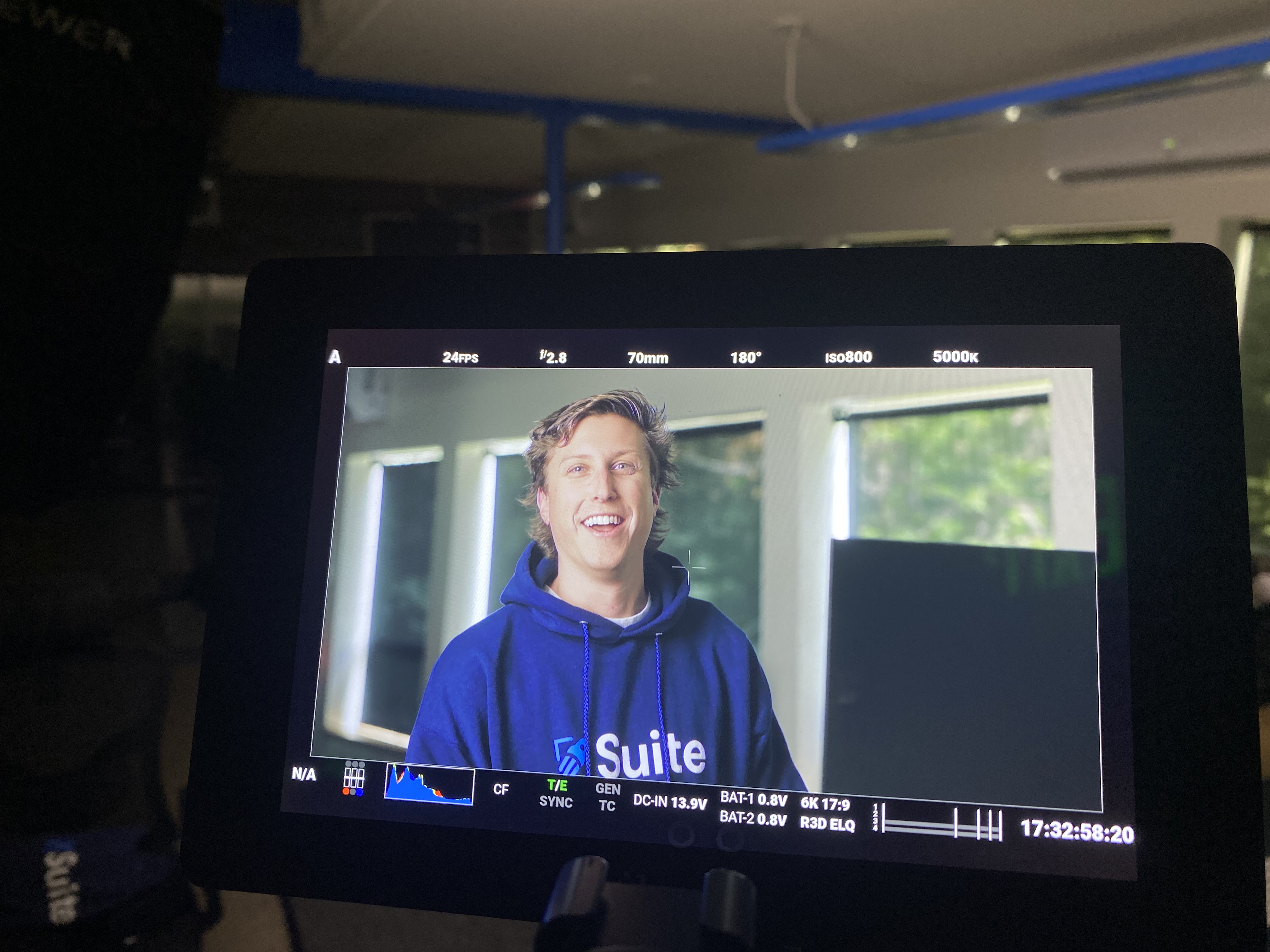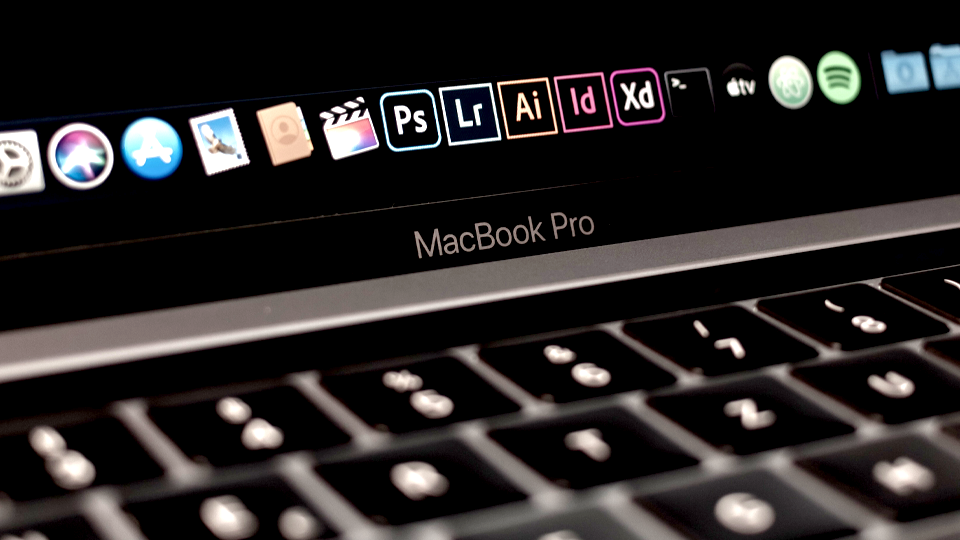Movies for audiophiles: 20 films that showcase the importance of sound design
The Editors

5 Minutes

For moviegoers who appreciate audio, here are 20 flicks sure to pique your interest.
Watching a movie with the sound off is like going to a concert and only listening to the music—you’re missing half of the show! For moviegoers that have a keen appreciation for the aural side of things, whether that’s an affinity for film scores, soundtracks, an engineer’s mixing prowess, or just the booms and bangs of audio effects, there are plenty of reasons to cheer at the end of a film. The moment that audio was introduced into movie-making, there was a revolution in entertainment. Solely character acting, like Charlie Chaplin did in his black-and-white slapstick humor films, didn’t cut it anymore. Since then, cinema has evolved, and the role of audio has become evermore important.
Much like a director is sought-after for his or her particular style, sound engineers and audio specialists find their niche. Take Gary Rydstrom, for example, a name you likely haven’t heard before, but one that has graced the credits of many of the biggest films to hit cinemas. His audio work on Jurassic Park and Saving Private Ryan helped solidify both flicks as some of the most thrilling of all time. Surely, the thumps of the dinosaurs walking, the roar of the Tyrannosaurus Rex, the whirring of the helicopter blades overhead, and the pangs of gunfire ringing out through every battle scene play a pivotal role in the impact of both movies.
But Rydstrom is just one example. Some audio designers make their name in the industry by focusing on microphone techniques and recording work on-set, or in the recording studio if something needs to be re-recorded; others find themselves in the editing bay, mixing and mastering the final tracks for distribution alongside producers, directors and other executives. No matter the focus of the sound designer, their role in creative process is vital.
Here, we’re showcasing 20 movies that are sure to pique the interest of every audiophile in the audience. Ranging from old to new, this list encompasses award-winning audio performances, and celebrates the use of music, score, and sound design in every way. But don’t take our word for it—the next time you watch one of these films, mute the volume, and gauge your reaction.
Star Wars (1977 - onwards)
Star Wars stands tall in the annals of cinema history for numerous reasons. One of which is its innovative (and, frankly speaking) groundbreaking sound design. Sound designer Ben Burtt didn't just create audio effects for this iconic franchise; he breathed life into a universe. The hum of the lightsaber, the beeps of R2-D2, the roar of the TIE Fighters—each sound was carefully crafted to create an aural experience as memorable as the visual one.
Apocalypse Now (1979)
Apocalypse Now is a landmark in the history of sound design. Walter Murch, the sound engineer behind this masterpiece, coined the term "sound design," and the film serves as an embodiment of his vision. The use of sound to evoke emotion and complement the visual narrative—particularly the use of the disorientating song "The End" by The Doors in the opening sequence—is awe-inspiring, to say the least. The layering of dialogue, music, and sound effects demonstrated how sound could be as compelling a storytelling tool as cinematography.
Saving Private Ryan (1998)
Saving Private Ryan provides a masterclass in immersive audio, right from the get-go. The D-Day scene, however, stands out for its brutal and visceral sound design. The sounds of bullets, shells, ocean waves, and human cries combine to create a soundscape that throws the viewer into the heart of the chaos, fear, and confusion of war, just the same as the story’s protagonist. The audio work in Saving Private Ryan is so accurate (and intense) that veterans have praised the film for its realism, and it continues to resonate with audiences who rewatch the film today.
Gravity (2013)
Gravity redefined the traditional approach to sound in space. Knowing that sound doesn't travel in a vacuum, the audio team, led by Glenn Freemantle, was challenged with the task of creating aural effects that matched the eye-popping nature of the film’s visuals. So, the team chose to convey sound through the characters' suits, using vibrations. This inventive solution created an intimate, terrifying, and yet strangely silent world, proving that sometimes, the absence of sound can be as powerful as its presence.
A Quiet Place (2018)
Another example of a film that shows the influence the absence of sound can have is A Quiet Place, featured here. The strategic lack of sound is, really, the heart of of the movie, a horror film where the slightest noise attracts the human-slaying monsters roaming around outside. With a minimalistic approach, the sound design significantly heightens tension and fear, transforming silence into a menacing character itself. This is an excellent demonstration of how less can be more in sound design, and a testament to the power of sound in driving narrative and emotion.
Blade Runner (1982) and Blade Runner 2049 (2017)
A double bill of both Blade Runner films offers a course in how sound can be used to construct a believable and engrossing universe. Vangelis' synthesizer-driven score in the original movie creates an eerie, futuristic atmosphere that's integral to the film's dystopian appeal. The sequel echoes and elaborates on these audio themes with Benjamin Wallfisch and Hans Zimmer's electronic-based score, immersing viewers in a desolate yet familiar soundscape.
The Conversation (1974)
Walter Murch's work on Francis Ford Coppola's The Conversation offers a masterclass in audio storytelling. The plot revolves around a surveillance expert and a particular conversation he's trying to interpret, immediately integrating the importance of audio into the story’s larger narrative. The way audio clues are laid out for both the protagonist and the audience during the course of the film highlights the ability for these audio clips to be a central narrative device.
The Lord of the Rings Trilogy (2001-2003)
The Lord of the Rings trilogy demonstrates the grandeur that sound can add to an epic fairytale. Howard Shore's sweeping score is as integral to Middle-earth as its stunning visuals; similar to Burtt’s influence on the Star Wars franchise. From the quiet, calming rustling of leaves in the Shire to the horrifying screeches of the Nazgul, and the stomps of the troll’s feet, the detailed and diverse sound design by Ethan Van der Ryn and Mike Hopkins brings the fantasy world to life. We can only imagine how much fun this project was for the audio engineers—after all, how do you begin to fathom what a Nazgul would sound like anyway?
No Country for Old Men (2007)
No Country For Old Men sparsely uses music, and instead relies heavily on sound design to build tension, specifically the use of diegetic sound—sound (in an television show, movie, etc.) that occurs within the context of the story and is able to be heard by the characters. It’s sounds like the hiss of Anton Chigurh's captive bolt pistol that show the effect Sound Editor Skip Lievasay wanted to achieve in this thriller. The absence of non-diegetic sound, or sound that serves only the audience and not the characters in the story, can offer a powerful narrative purpose.
Dunkirk (2017)
Christopher Nolan's war epic Dunkirk uses sound to a nerve-wracking effect. From the ticking clock that underscores the entire score to the deafening roars of planes and explosions, the soundscape created by Richard King and Alex Gibson is relentless, anxiety-inducing, and incredibly effective at placing the audience right in the middle of the chaos.
The Matrix (1999)
The Matrix disrupted the cultural (and sonic) landscape of cinema, particularly when it came time to break the sound barrier and create innovative "bullet time" sound effects to pair with the iconic closing sequence that sees Neo bend the rules of the matrix. This symphony of swirling bullets, echoing thuds, and digital reverberations simultaneously underscore the film's revolutionary concept while breaking new ground in the audio design space.
Baby Driver (2017)
Baby Driver stands out because it lets the music shine. The orchestration of music and movement in this movie had to be perfect—the story is about a badass getaway-car driver, after all—and the designers nail it. Between the song choices that really pump up the vibe of the movie and the high-octane chase scenes and action-packed visuals, there’s a dance happening between the movie’s two elements, always adding to the energy-packed feeling of the film.
Dreamgirls (2006)
Dreamgirls won an Oscar for Sound Mixing back in 2007, and for good reason. The film follows a fictional storyline that closely echoes the history of Motown through the 1960s and 1970s, which means it’s brimming with memorable music performances. In a movie where the vocal and musical performances are equally important as the dialogue, the mixing had to be fine-tuned to bring out the best from both sides of the narrative, the actual Motown singing and the storyline. Encapsulating the essence of an era where melodies spoke volumes, the mixing in Dreamgirls a shining example of how the art of sound can truly elevate a narrative.
Gladiator (2000)
In Gladiator, a visceral version of Roman history is portrayed on-camera, and the movie’s sound designers had a monumental task during its creation. The roar of the spectators echoing through the enormity of the Colosseum. The screams of a fighter on his final breath. The clashing of swords, axes, and shields. The sound design in Gladiator is instrumental in transporting its audience deep into the fierce realities of the Roman Colosseum. The audio landscape provides a visceral depth to this epic tale, anchoring viewers firmly within its action-filled universe.
The Bourne Ultimatum (2007)
The Bourne Ultimatum, another Oscar-winning movie in the Sound Mixing category, expertly wields its sound design as a tool of immersion into the action-packed world of Jason Bourne. The mixing here allows the audience to really feel each punch and hear every tire screech, and while you might not notice that upon the first time watching the movie, you’ll certainly hear the difference it makes when you watch it next. The audio elevates the film's relentless pace, but also tunes viewers into its nuances, like the clanking of a keychain or footsteps from down the hall. Overall, it provides an exciting sonic journey alongside one of the world’s finest fictional spies.
The Hurt Locker (2008)
The Hurt Locker, a war thriller that follows a bomb-diffusion team through war-torn Afghanistan, is infused with boiling-point tension and incredible use of sound design. The experts behind the mixing board on this movie use sound to help characterize the scenery—military-style sounds play during scenes at the U.S. Army Base in contrast to notably “third world” sounds that play during scenes shot out in the city of Baghdad; when it’s time for one character to diffuse a bomb, the clicking and ticking sound as if they are happening right in your ear, bringing the audience one-step closer to the character’s experience. All in all, the sounds of The Hurt Locker are a pivotal aspect to the film and cannot go under-appreciated.
Hacksaw Ridge (2016)
Any war movie requires a particular attention to sound. Hacksaw Ridge, the story of the battle of Okinawa, displays one of the bloodiest battles in World War II with a remarkable commitment to auditory detail. Every single audio clip in this movie was meticulously crafted or replaced, a tactic that allows the sound designers to fine-tune the audience’s experience of the war drama. From the resounding explosions of the battle scenes to the hushed whispers of prayer, the completely customized sound design augments the gritty realism of this heavy-hitting real story.
Whiplash (2014)
Whiplash is a testament to the power of jazz. As is expected, the film needed to make its audio more than a mere backdrop—rather, the score and sound design of this film are truly its heartbeat. The film opens with the sound of a drum roll, getting faster and faster, and it just builds in tone (and tempo) from there. Intense dialogue instills an aggressive tone to the film, which is matched beat-for-beat by the movie’s complex musical score. If you’re looking for a musically inspired movie that’ll leave your jaw on the floor, look no further.
Spencer (2021)
Spencer comes with a surprise twist: The composer of the movie’s score is Johnny Greenwood, better known as the guitar player in the band Radiohead. Over the course of his career, he’s made a quiet name for himself as a movie score composer and, here, blends jazz and classic, Baroque styles to create an ominous overtone to the film. Greenwood uses sound design to portray the protagonist's internal struggle, employing subtlety to powerful effect. The echo of the empty palace, the rustle of turning pages, all contribute to a sense of isolation and unrest. Here, the audio is more than an accompaniment—it's a nuanced character in the story.
Collaborate from anywhere like the best filmmakers >>
Click here to learn more about Suite




































